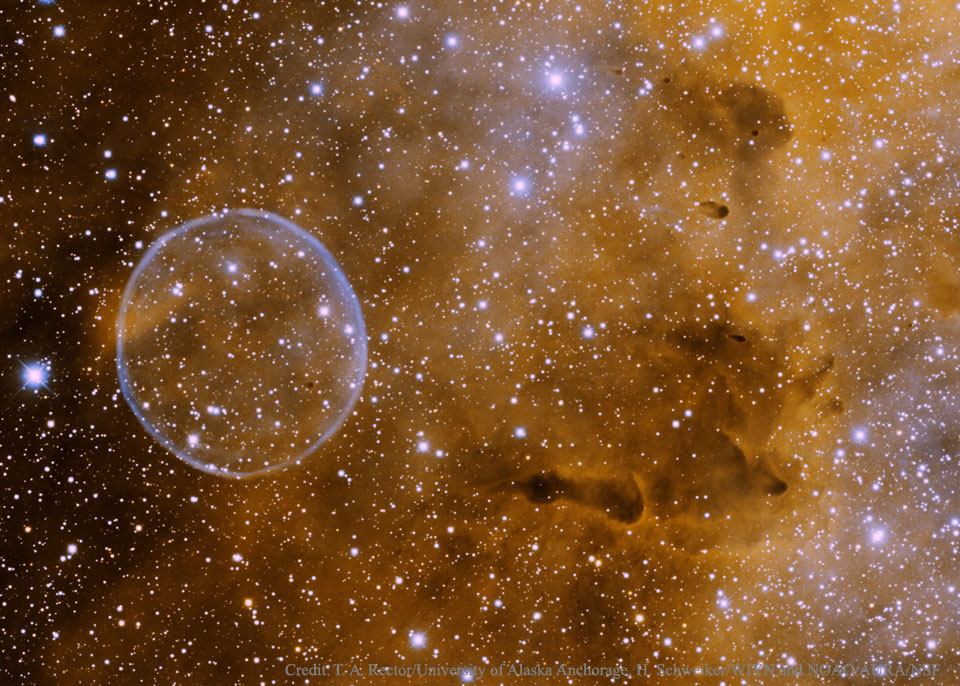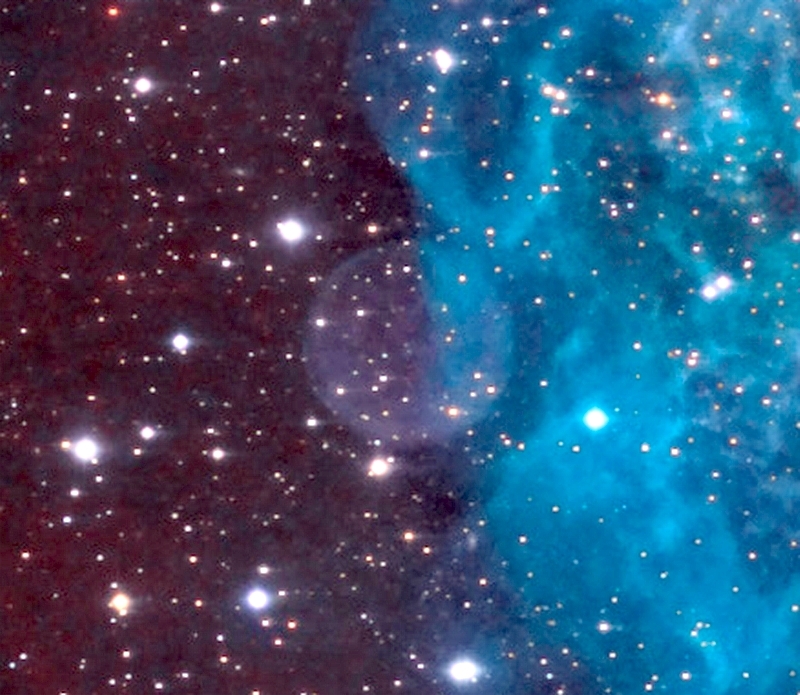SH2-308: The Dolphin-Head Nebula. Image Credit & Copyright: Nik Szymanek
The star of the show

is the star of the show!

And the star of the show is
EZ Canis Majoris, a Wolf-Rayet star of spectral class WN4. According to
Wikipedia, the temperature of a star of spectral class WN4 is typically around 70,000 K, more than eleven times hotter than the Sun, and hotter than any "normal" O-type star like, for example,
Theta 1 Orionis C in the Trapezium.
So this star is not
red hot, and it is not even
blue hot, but
ultraviolet hot!!
There are two quite different Wikipedia suggestions about the bolometric (total) luminosity of EZ Canis Majoris. According to the
"Properties" Wikipedia entry, a star of spectral class WN4 is likely to have a bolometric luminosity of some 200,000 L
☉. But according to the
"EZ Canis Majoris" entry, this particular star has a bolometric luminosity of 620,000 L
☉! Take your pick!
The reason why EZ Canis Majoris is so terrifically luminous, if you count all wavelengths, is precisely because it is so "ultraviolet hot" and emits such enormous amounts of invisible ultraviolet light. At visual wavelengths, it is much more modest.
What about the Dolphin Head?
The Dolphin Head nebula is clearly produced by EZ CMa itself, because like all Wolf-Rayet stars EZ CMa is blowing a strong and steady wind that has removed all the outer layers from it.
So how did the Dolphin get its snout? Well, how about EZ CMa had an outburst of some sort and sent a pair of jets in opposite directions, "puffing out" its nice bubble shape particularly where the dolphin's snout is now located?
What about the bright orange star to the right of EZ CMa in Nik Szymanek's image?

That star is
Omicron 1 Canis Majoris, and it is a supergiant star of spectral class K2Iab. This makes Omi 1 CMa a cool red supergiant star, but not as cool or as red or as bright as, say,
Antares. Because Antares is a supergiant star of spectral class M1.5Iab-Ib, so it is so much cooler than Omi 1 CMa, and Antares therefore produces so much more infrared light.
So it would seem that, appearances notwithstanding, EZ CMa really
is a lot brighter than Omi 1 CMa, because the former is "so much more ultraviolet" than the latter is infrared. According to somewhat conflicting information at Wikipedia, the bolometric luminosity of Omi 1 C is "only" 16,000 L
☉, making it way way fainter than EZ CMa at, possibly, 620,000 L
☉.
I take it that both these stars are physically relatively close to one another, because it would be too much of a coincidence if two very massive and unusual stars (which show almost the same proper motion in space, too), and which are seemingly, from our point of view, located inside the same nebula, would actually be separated by hundreds or thousands of light-years. I don't believe they are, so they are a kind of neighbors.
And what neighbors they are! You wouldn't want to live next door to them!!

Ann
 SH2-308: The Dolphin-Head Nebula
SH2-308: The Dolphin-Head Nebula




